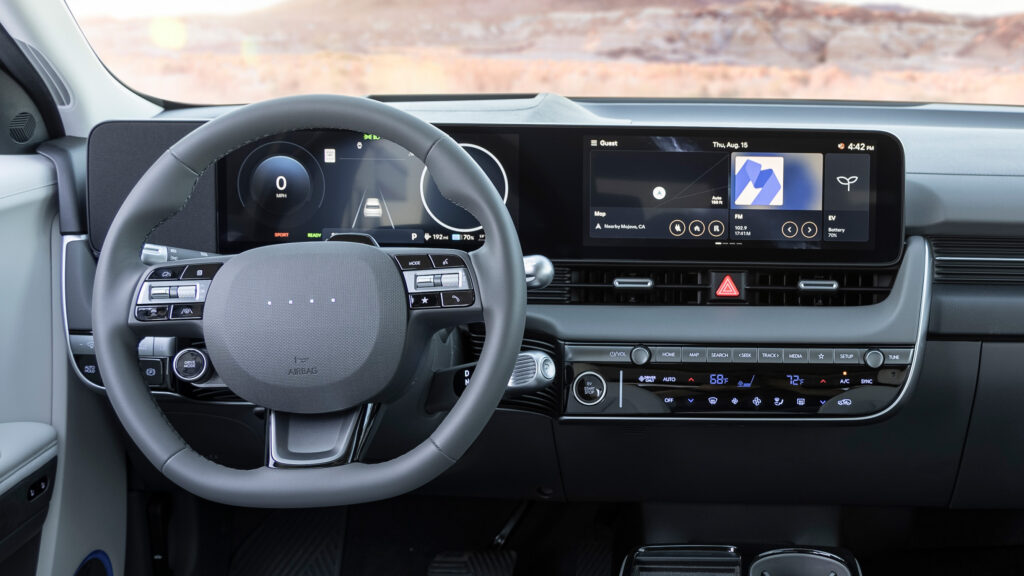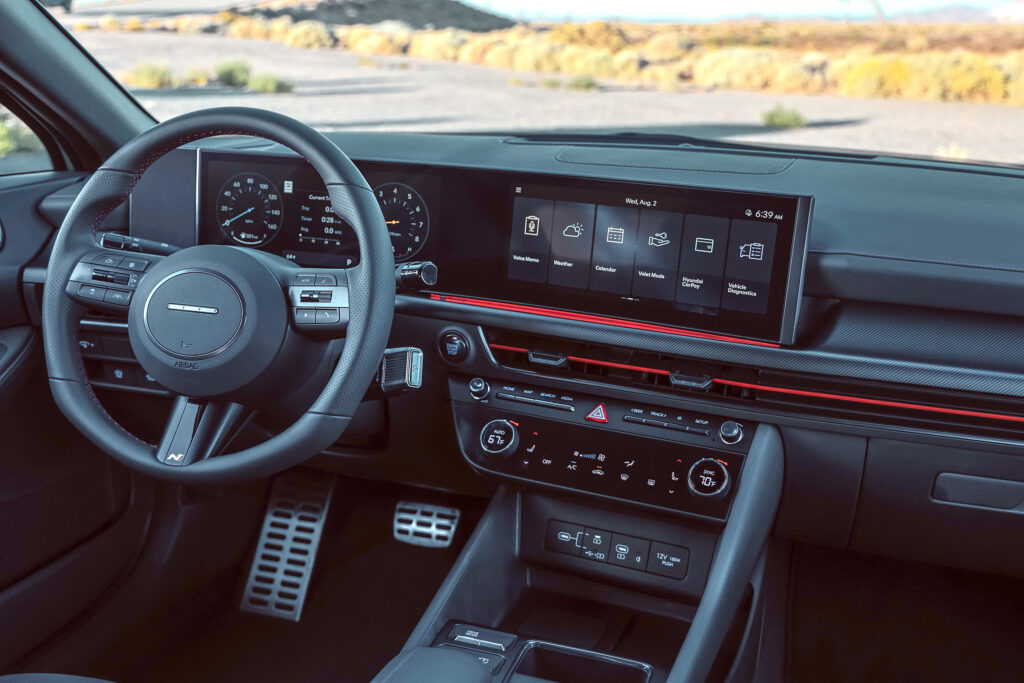- Hyundai admits it made a mistake by replacing too many physical controls with touchscreen buttons.
- The automaker’s US design chief says American drivers hated the trend, so future Hyundais will feature more old-school switches.
- However, the firm thinks attitudes may change when cars are equipped with more self-driving technology.
You could call it the Tesla Effect. I’m talking about the shift across the industry to replace traditional physical controls for functions like temperature selection with virtual buttons on a touchscreen. Designers loved the new techy setups, but as Hyundai discovered, American buyers did not.
The Korean carmaker has admitted that it made a mistake by going all-in on touchscreens, as many brands have done over the past decade.
Related: Rivian’s Software Boss Says Dash Buttons Are A Bug, Not A Feature – Is He Right?
“As we were adding integrated [infotainment] screens in our vehicles, we also tried out putting touchscreen-based controls, and people didn’t prefer that,” HDNA Vice President Ha Hak-soo told Korea JoonAng Daily.
“When we tested with our focus group, we realized that people get stressed, annoyed and steamed when they want to control something in a pinch but are unable to do so,” Ha said.
Touchscreen tech has allowed design teams to create clean, uncluttered cabins and to make more configurations of a car’s functions available to the driver then would ever be possible using physical buttons alone. And when you’re parked up, using those touchscreens feels entirely natural.

But when a car is jiggling over bumps and you’re taking your eyes off the road too long to locate a digital switch because you can’t simply reach out and find it by feel, you know touchscreen tech is not without problems. And what’s frustrating for many drivers is that making a simple change to a feature often takes more time and effort now than it did when that feature was controlled by a simple dial or button.
Hyundai has known of American drivers’ feelings towards touchscreen tech for some time now and committed to retaining physical controls in its cars. The recently facelifted Ioniq 5 already benefits from this thinking.
Nevertheless, Hyundai’s North American design crew suggested to Korea JoonAng Daily that we may see a shift in customer attitude towards touchscreens when cars gain more advanced driver-assistance technology that allows them to relax more.





